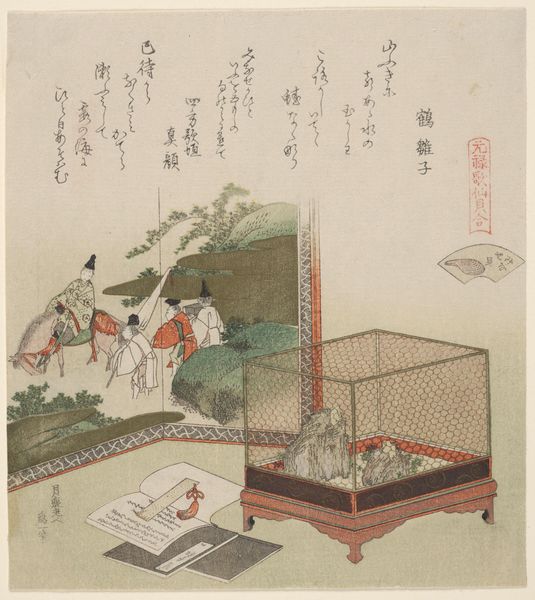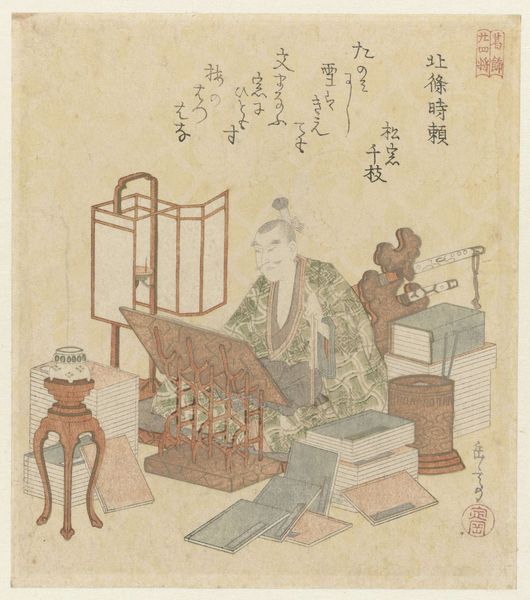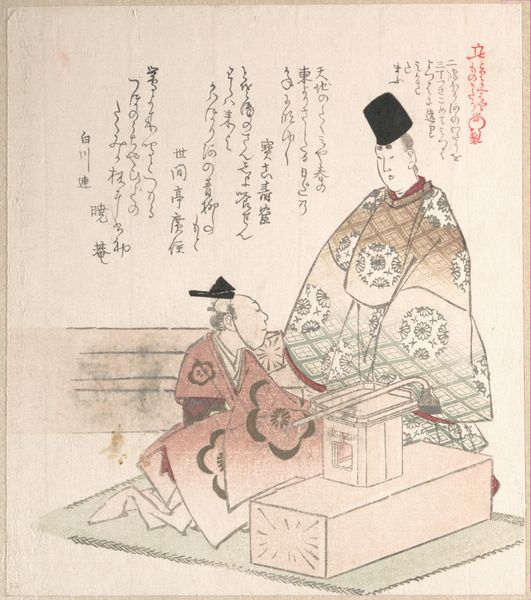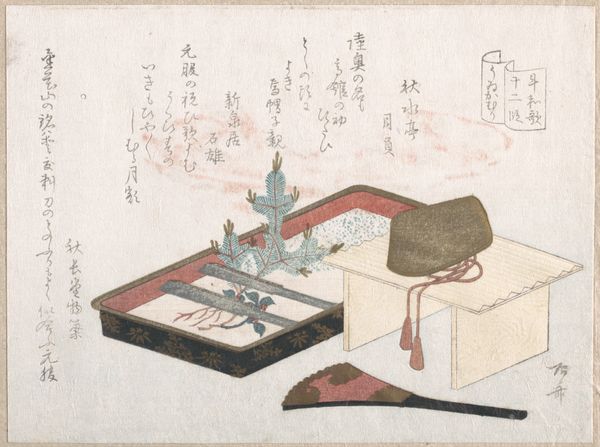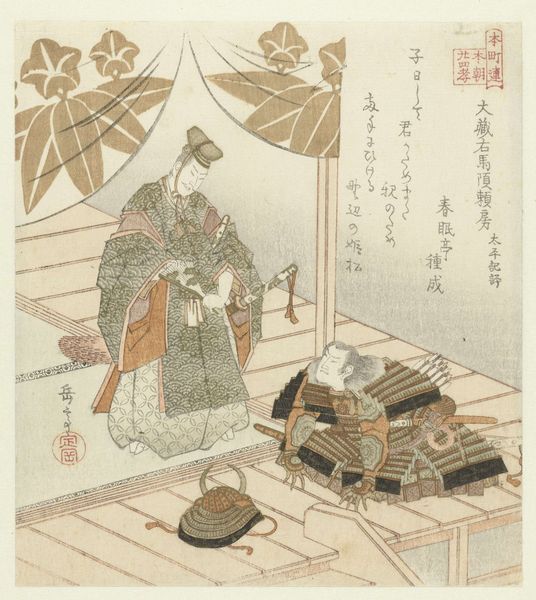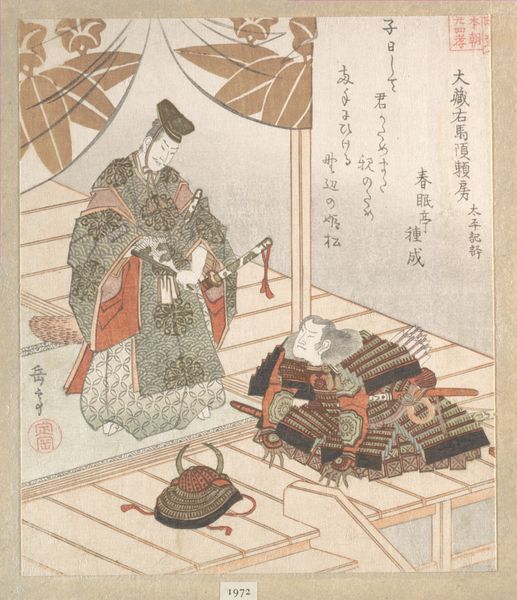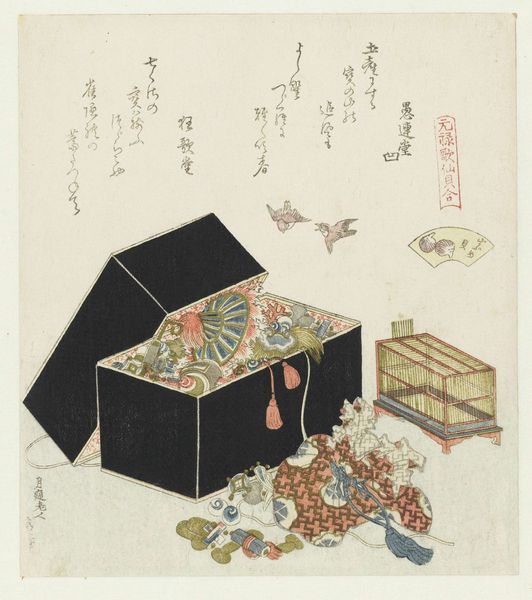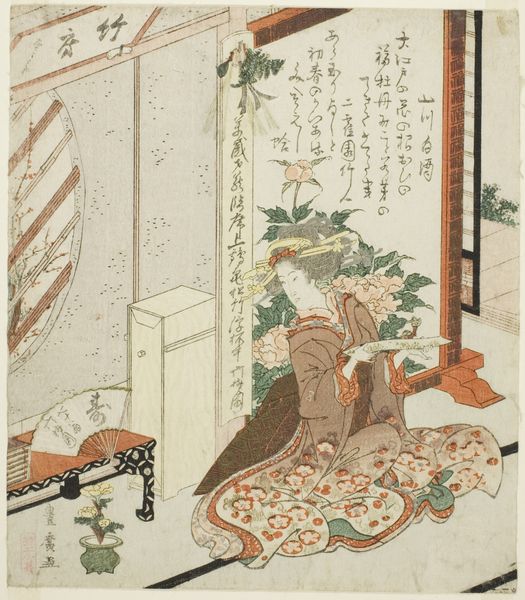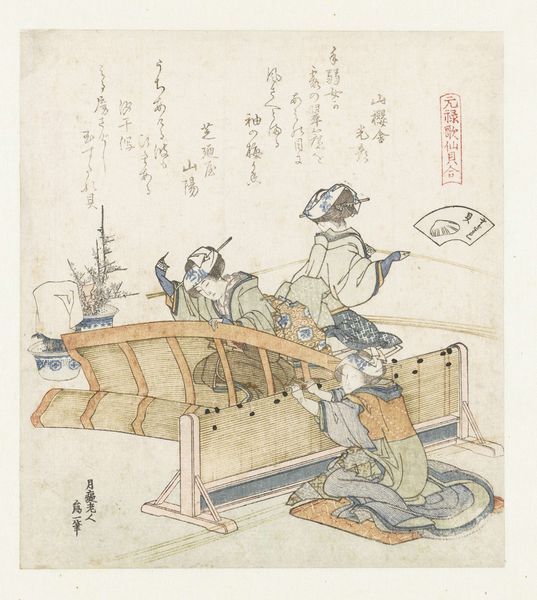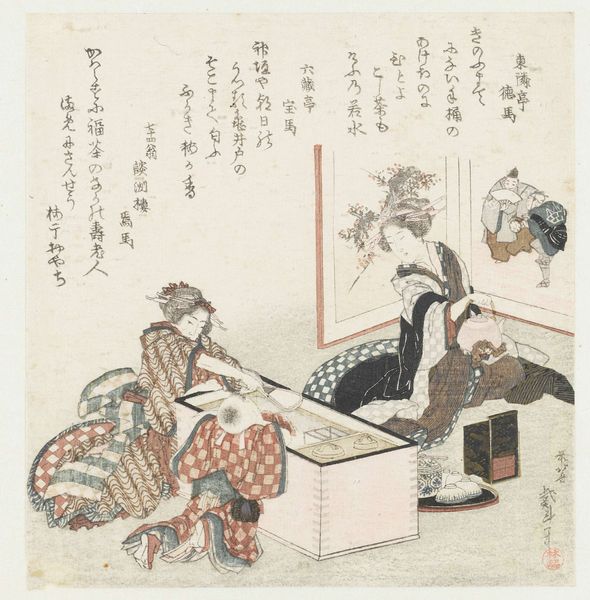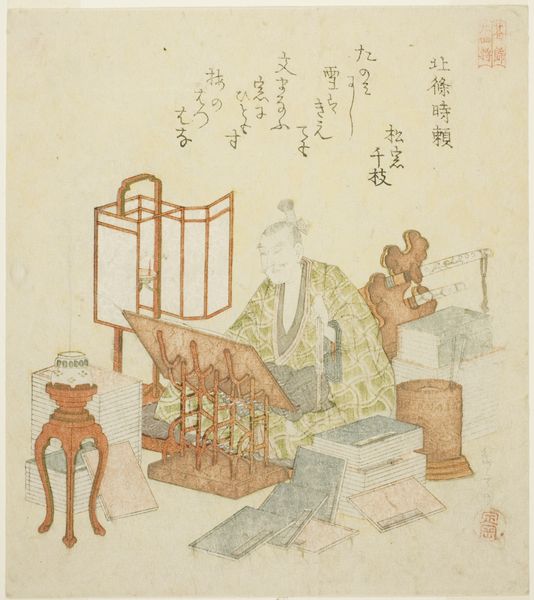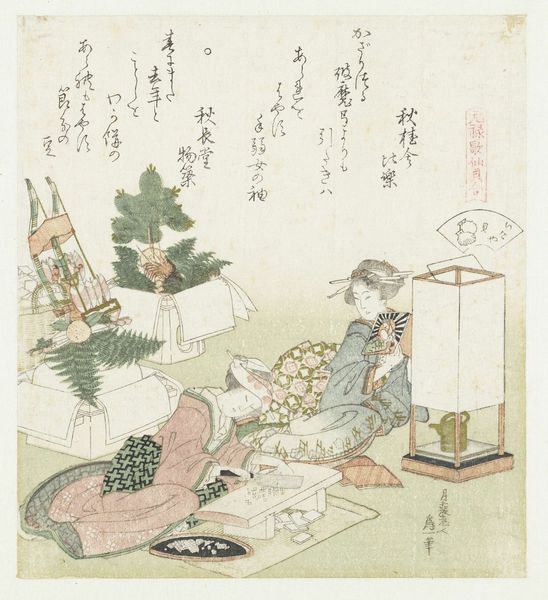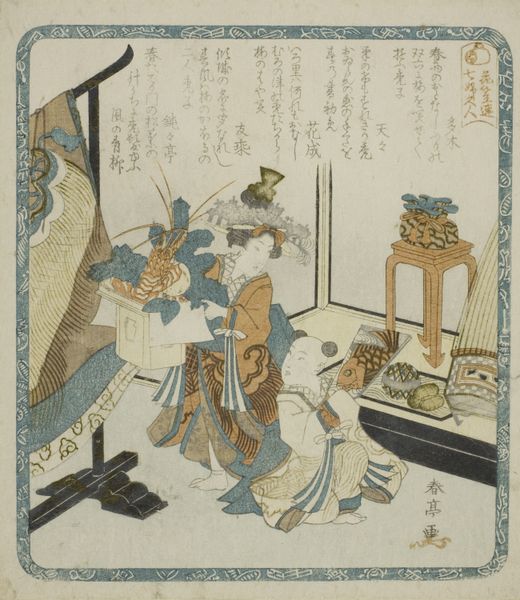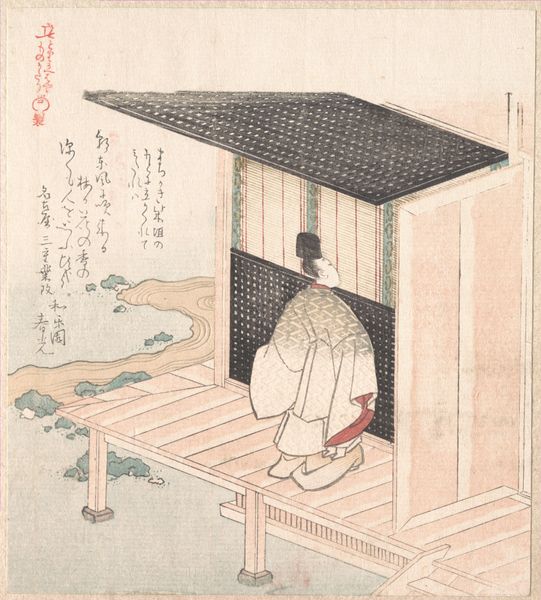
print, paper, ink
# print
#
asian-art
#
ukiyo-e
#
paper
#
ink
#
genre-painting
Dimensions: height 198 mm, width 178 mm
Copyright: Rijks Museum: Open Domain
Curator: This delightful print, titled "Waterloze schelp" or "Shell without Water," was created around 1821 by Katsushika Hokusai and it's part of the collection at the Rijksmuseum. It’s crafted with ink and color on paper. What strikes you about it? Editor: I find myself immediately drawn to the stillness. It's a tableau of quiet observation—almost like a frozen moment lifted from a dream. The delicate lines and muted colours amplify this sense of suspended animation. Curator: It is from a series showing objects acting in place of people to tell stories, drawing on social conventions to imbue inanimate things with satirical human traits. The object that features in the series are all owned by one rich man from that time period. The artist here has used objects to demonstrate taste in society. It reminds me that in 1821 the art market was evolving beyond patronage into one governed by art dealers that were profit driven. Editor: Absolutely, and that connects with how the composition is laid out. A shell held captive in the intricate cage becomes a symbol of refined acquisition. But more subtly, I read a deeper story there about nature being curated and confined by society’s expectations. This feels reinforced by that glimpse of courtly scene, almost a receding memory behind the shell cage. The very symbols point to how rituals and hierarchy play their role even to the degree of how nature is consumed, wouldn't you say? Curator: Yes, this image reflects a world of art consumed by wealthy and middle class customers who were a target audience of publishers during that period. One also has to consider the context in which these were shown to audiences. Consider for a moment that there was political oppression happening in Japanese society. Therefore, Ukiyo-e prints were not just representations, they were artifacts within those constraints. Editor: The open book too! We almost overlook it, lying in the lower part of the image. I think that is about the pursuit of intellectual pleasure and artistic mastery, doesn’t it. So, even the most benign of activities, study and artistic expression, get wrapped up in power dynamics. The book even has a shell design as if to hint at its meaning. It ties together all the elements and confirms the shell as not a shell at all, but part of an elaborate theatre of symbolism. Curator: Indeed, this prompts us to reconsider how museums, galleries, and socio-political currents mold both artistic output and audience understanding, don't you think? Editor: I couldn't agree more. Looking deeper unveils layers of history imbued into art that goes beyond initial appeal, adding far more resonance.
Comments
No comments
Be the first to comment and join the conversation on the ultimate creative platform.
